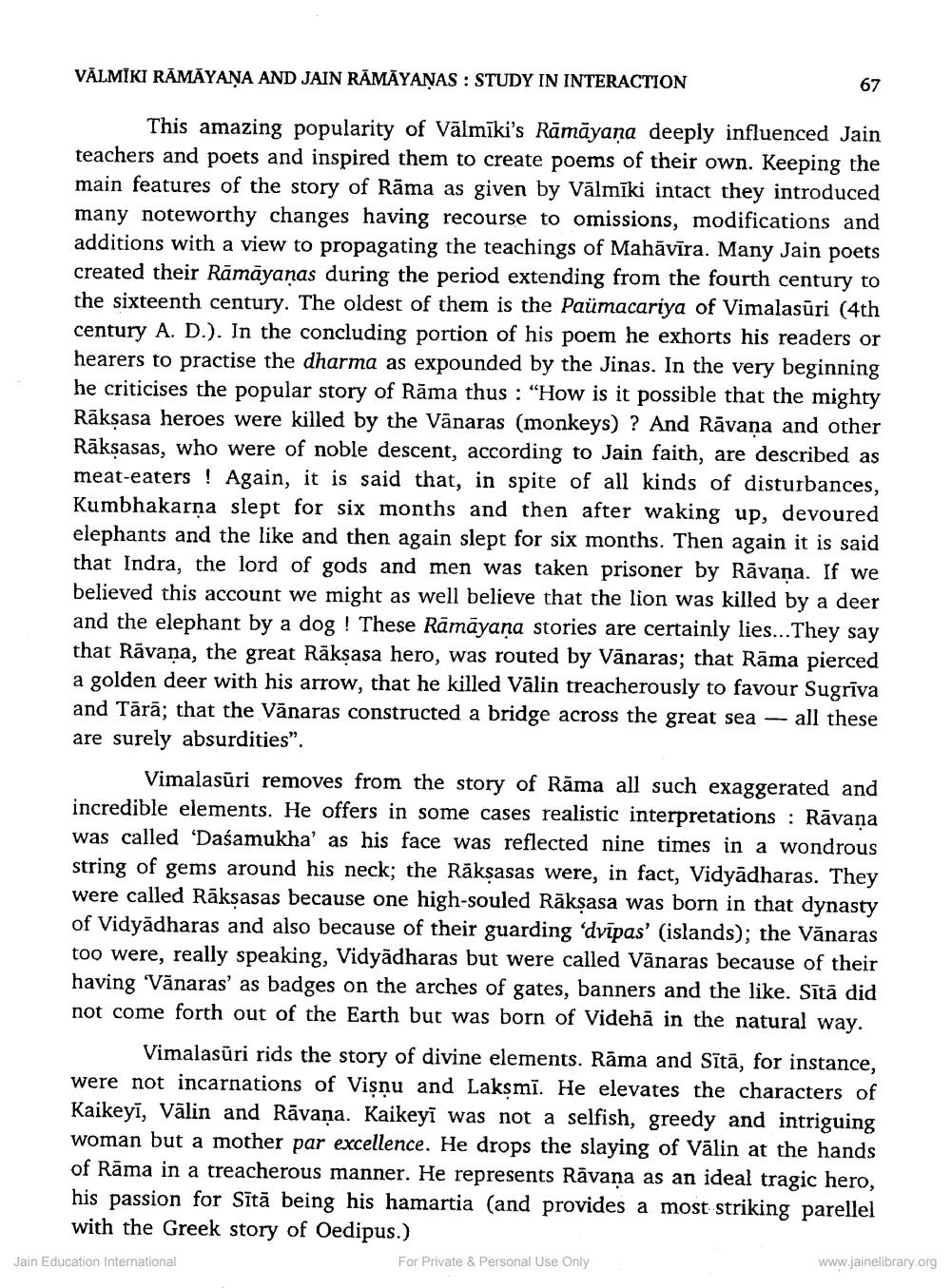________________
VĀLMIKI RĀMĀYANA AND JAIN RĀMAYANAS : STUDY IN INTERACTION
67
This amazing popularity of Vālmīki's Rāmāyaṇa deeply influenced Jain teachers and poets and inspired them to create poems of their own. Keeping the main features of the story of Rāma as given by Vālmīki intact they introduced many noteworthy changes having recourse to omissions, modifications and additions with a view to propagating the teachings of Mahāvīra. Many Jain poets created their Rāmāyanas during the period extending from the fourth century to the sixteenth century. The oldest of them is the Paümacariya of Vimalasūri (4th century A. D.). In the concluding portion of his poem he exhorts his readers or hearers to practise the dharma as expounded by the Jinas. In the very beginning he criticises the popular story of Rāma thus : “How is it possible that the mighty Rāksasa heroes were killed by the Vānaras (monkeys) ? And Rāvana and other Rākşasas, who were of noble descent, according to Jain faith, are described as meat-eaters ! Again, it is said that, in spite of all kinds of disturbances, Kumbhakarņa slept for six months and then after waking up, devoured elephants and the like and then again slept for six months. Then again it is said that Indra, the lord of gods and men was taken prisoner by Rāvaņa. If we believed this account we might as well believe that the lion was killed by a deer and the elephant by a dog! These Rāmāyana stories are certainly lies...They say that Rävana, the great Räksasa hero, was routed by Vānaras; that Rāma pierced a golden deer with his arrow, that he killed Vālin treacherously to favour Sugrīva and Tārā; that the Vānaras constructed a bridge across the great sea -- all these are surely absurdities".
Vimalasūri removes from the story of Rāma all such exaggerated and incredible elements. He offers in some cases realistic interpretations : Rā was called 'Daśamukha' as his face was reflected nine times in a wondrous string of gems around his neck; the Rāksasas were, in fact, Vidyadharas. They were called Rāksasas because one high-souled Rāksasa was born in that dynasty of Vidyādharas and also because of their guarding dvīpas' (islands); the Vānaras too were, really speaking, Vidyadharas but were called Vānaras because of their having Vănaras' as badges on the arches of gates, banners and the like. Sītā did not come forth out of the Earth but was born of Videhă in the natural way.
Vimalasuri rids the story of divine elements. Rāma and Sītā, for instance, were not incarnations of Visnu and Laksmī. He elevates the characters of Kaikeyī, Vālin and Rāvana. Kaikeyi was not a selfish, greedy and intriguing woman but a mother par excellence. He drops the slaying of Vālin at the hands of Rāma in a treacherous manner. He represents Rāvana as an ideal tragic hero, his passion for Sītā being his hamartia (and provides a most striking parellel with the Greek story of Oedipus.)
www.jainelibrary.org For Private & Personal Use Only Jain Education International




